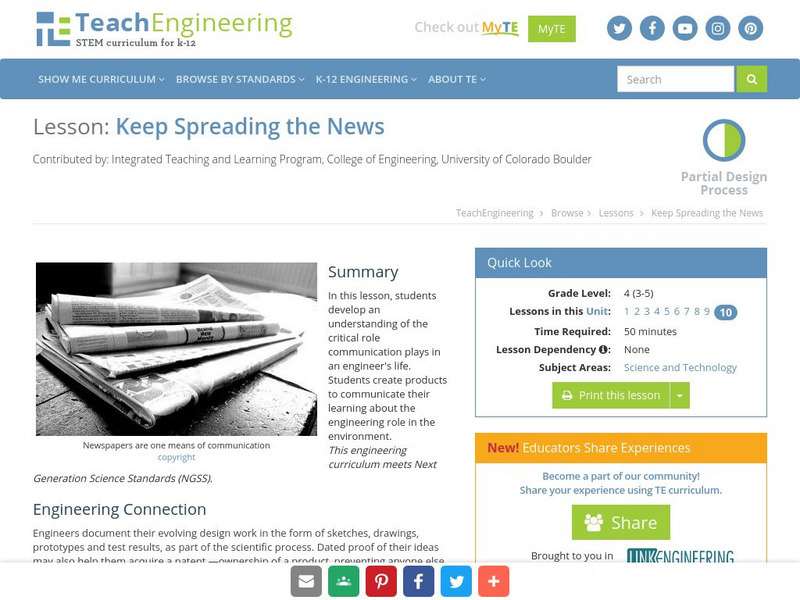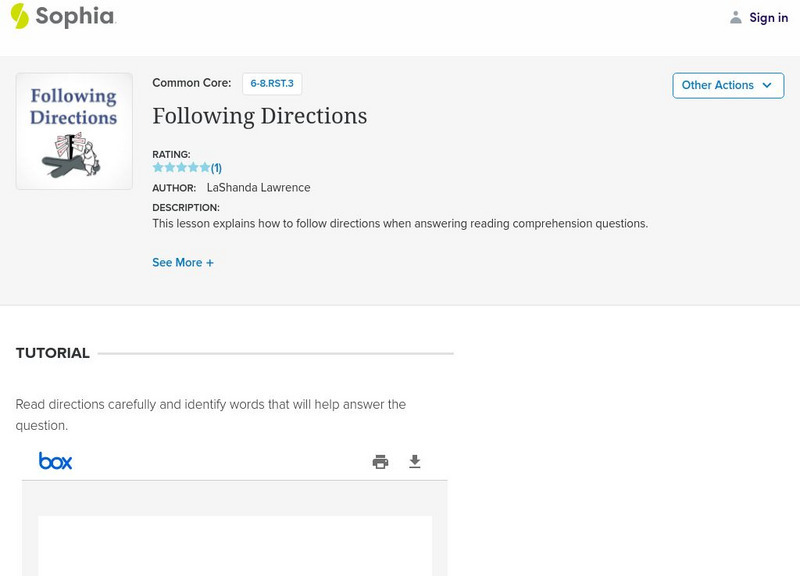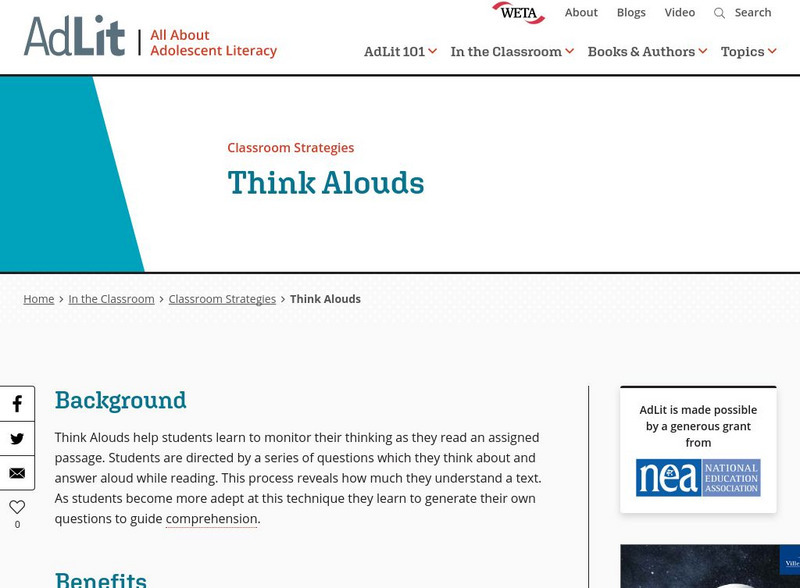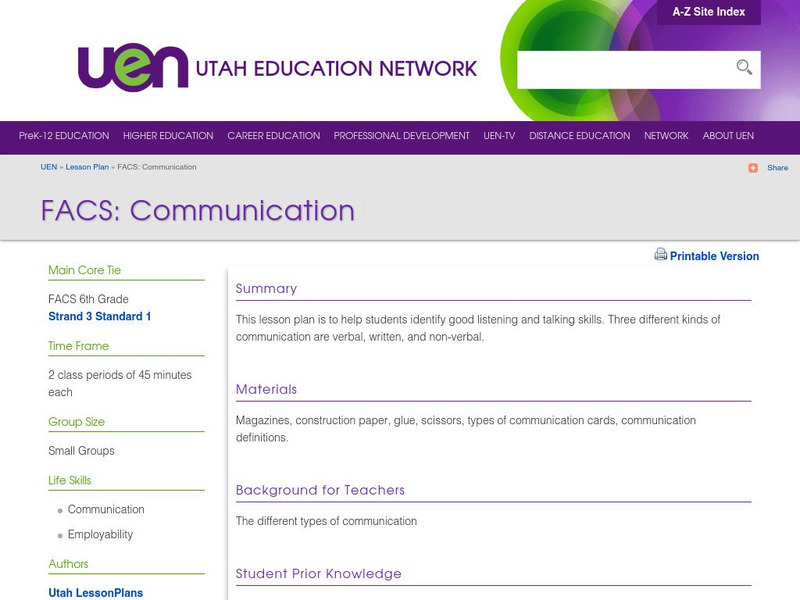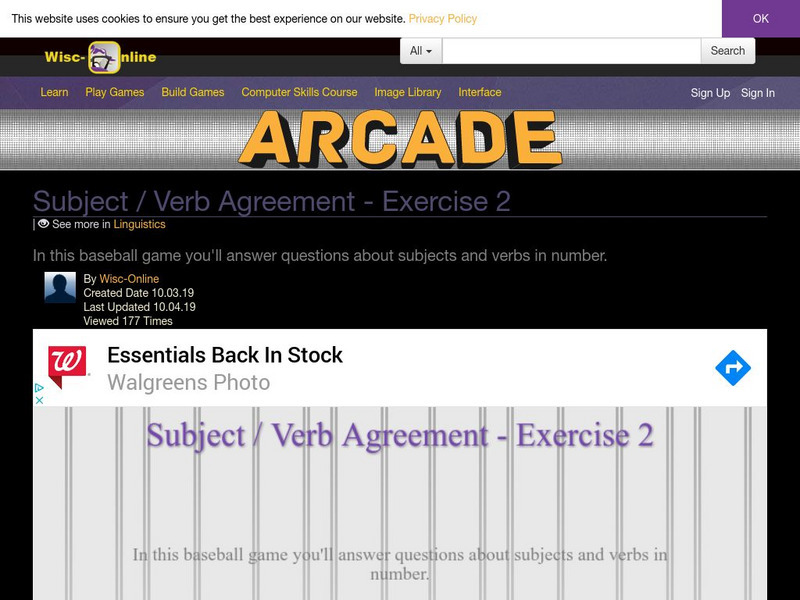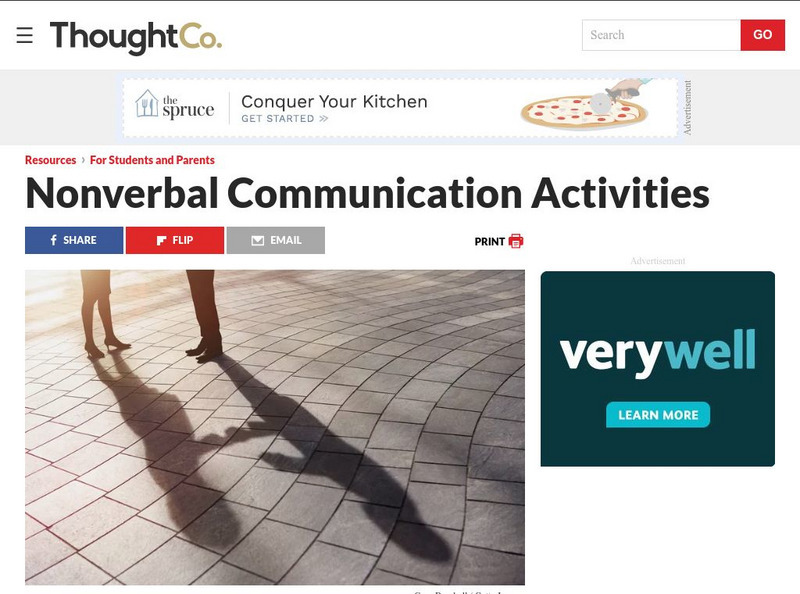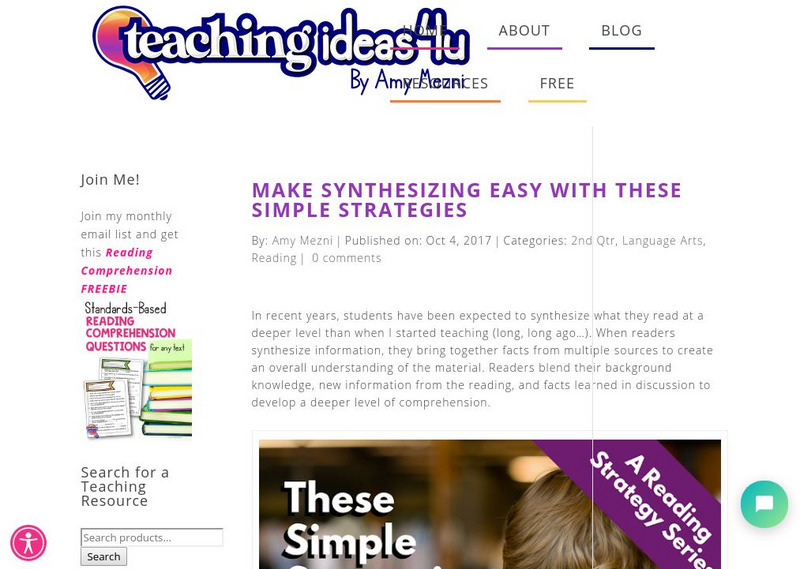ReadWriteThink
Read Write Think: Technical Reading and Writing Using Board Games
Contains plans for a game that helps teach technical reading and writing while reviewing a novel that students have read. In addition to objectives and standards, this instructional plan contains links to sites used in the lessons as...
ReadWriteThink
Read Write Think: Guided Comprehension: Evaluating
This lesson introduces students to the comprehension strategy of evaluating. Students learn this strategy through the "meeting of the minds" technique that teaches them to act out opposing views of two or more characters.
Writing Fix
Writing Fix: Exploring a More Specific Story
In this lesson, Ralph Fletcher's Marshfield Dreams is used as a mentor text. Students will write stories about an important friendship in their life. Then students will revise and attempt to make sure their writings have stayed on topic,...
Other
Center for Teaching Excellence: Activities to Engage Students [Pdf]
This resource gives numerous strategies to engage students in different types of collaborative discussion.
ReadWriteThink
Read Write Think: Talking About Books to Improve Comprehension
This lesson is a conversation-starter! In this lesson, students learn about striking up deep-thought conversations and staying on topic in the form of a book talk.
Other
Literature Circles Resource Center: Teaching Students How to Discuss
Teachers are given strategies and hands-on approaches to help students prepare for a discussion and participate as active members of it.
TeachEngineering
Teach Engineering: Keep Spreading the News
In this lesson, students develop an understanding of the critical role communication plays in an engineer's life. Students create products to communicate their learning about the engineering role in the environment.
Tom Richey
Slide Share: Making Connections
A slide show with thirty-two slides explaining how to use text to self, text to text, and text to world connections to improve reading comprehension.
Read Works
Read Works: An Urgent Message
[Free Registration/Login Required] This narrative nonfiction pieces shares how the Pony Express began. This passage is a stand-alone curricular piece that reinforces essential reading skills and strategies and establishes scaffolding for...
Sophia Learning
Sophia: Following Directions: Tutorial
In this slideshow tutorial, students will review basics regarding the following of directions on an assessment and/or reading comprehension test. Strategies related to looking for particular words and phrases in a testing situation are...
Mind Tools
Mind Tools: Problem Solving Skills
Discover the four basic steps in problem solving: defining the problem, generating alternatives, evaluating and selecting alternatives, and implementing solutions. The first step, defining the problem, is discussed in detail. Links to...
Colorado State University
Csu Writing Guides: Working in Groups
Resource includes helpful advice and information about working together and writing in groups (collaborative writing). Provides nodes on such topics as purpose, ideas, decision-making, and more.
Other
Vancouver Community Net: The Citizen's Handbook: Facilitating
Offers tips to help facilitate a meeting effectively. Provides several important suggestions along with examples and details.
AdLit
Ad lit.org: Classroom Strategies: Think Alouds
Think Alouds help students learn to monitor their thinking as they read an assigned passage. Students are directed by a series of questions which they think about and answer aloud while reading. This process reveals how much they...
University of Colorado
University of Colorado: Active Listening
The site descibes what active listening is and provides some links for further study.
University of California
Fifth Dimension: Following Directions Test
Two versions of a 12-question test to see if students can follow directions for simple procedures. Directions for administering the tests and answer keys are provided.
Utah Education Network
Uen: Facs: Communication
This lesson plan is to help students identify good listening and talking skills. The different kinds of communication are verbal, written, and non-verbal. Included in this instructional activity are activities for each type of...
Wisc-Online
Wisc Online: Subject Verb Agreement Exercise 2
This is a 20-question exercise/quiz matching subjects and verbs in number.
Learning Farm
Learning Farm: Explaining Relationships
An interactive activity that practices determining relationships between events and concepts.
Better Lesson
Better Lesson: What the Heck Is That? Inferring the Purpose of an Object
In this lesson, 5th graders use their prior knowledge and inference skills to determine uses of unfamiliar objects. They participate in group discussions and analyze the key information they have in order to reach conclusions.
Other
Verb Rules: Must and Have To
The verbs "must" and "have to" are often troublesome. This site gives instructions for their proper use.
ThoughtCo
Thought Co.: Nonverbal Communication Activities
It's important to be aware of nonverbal communication, so we can avoid sending and receiving unintentional messages through our expressions and body movements. These exercises are designed to help you understand how much information we...
Other
Teaching Ideas 4u: Make Synthesizing Easy With These Simple Strategies
Learning to synthesize can be challenging for some students, but there are a few different support strategies that teachers can use in their lessons: REST method, ADD method, and Venn Diagram to teach synthesizing.
Alabama Learning Exchange
Alex: Can You Solve the Problem?
During this lesson, students will analyze ways in which the character(s) in stories solve problems encountered. In small groups, students will brainstorm possible solutions to realistic problems in order to enhance connections to...





![Center for Teaching Excellence: Activities to Engage Students [Pdf] Professional Doc Center for Teaching Excellence: Activities to Engage Students [Pdf] Professional Doc](https://d15y2dacu3jp90.cloudfront.net/images/attachment_defaults/resource/large/FPO-knovation.png)


